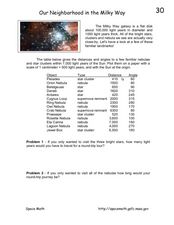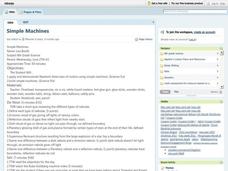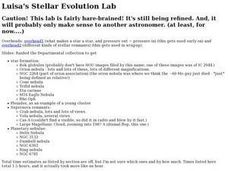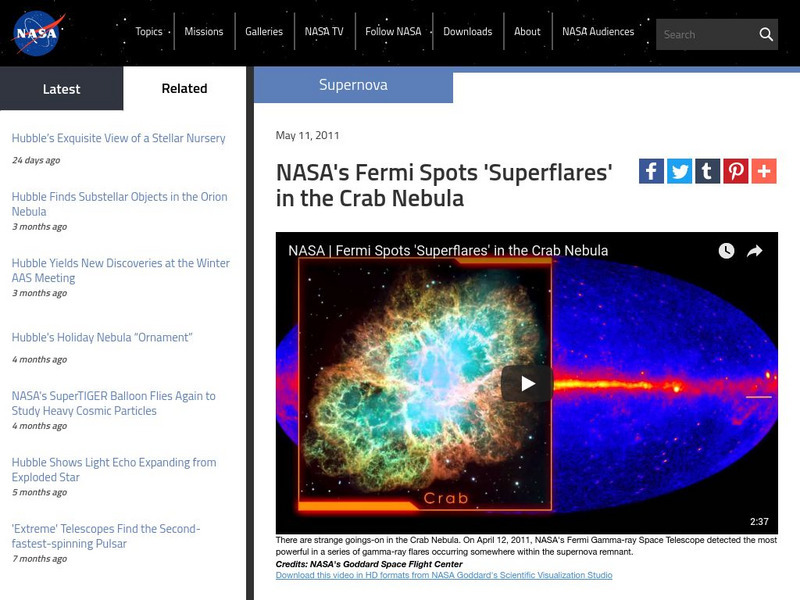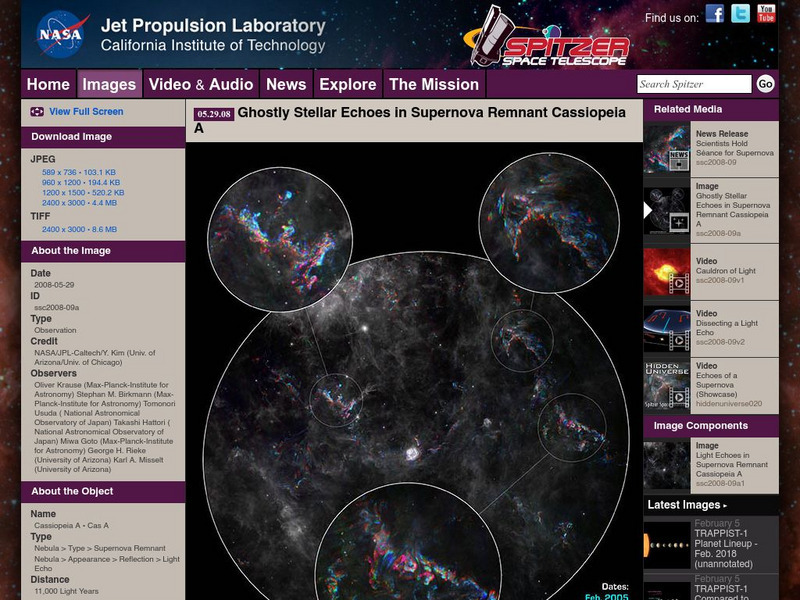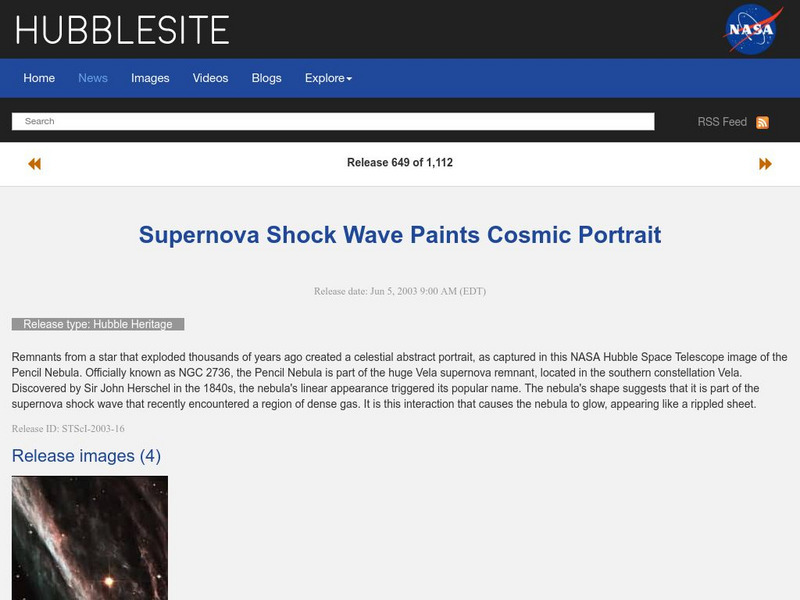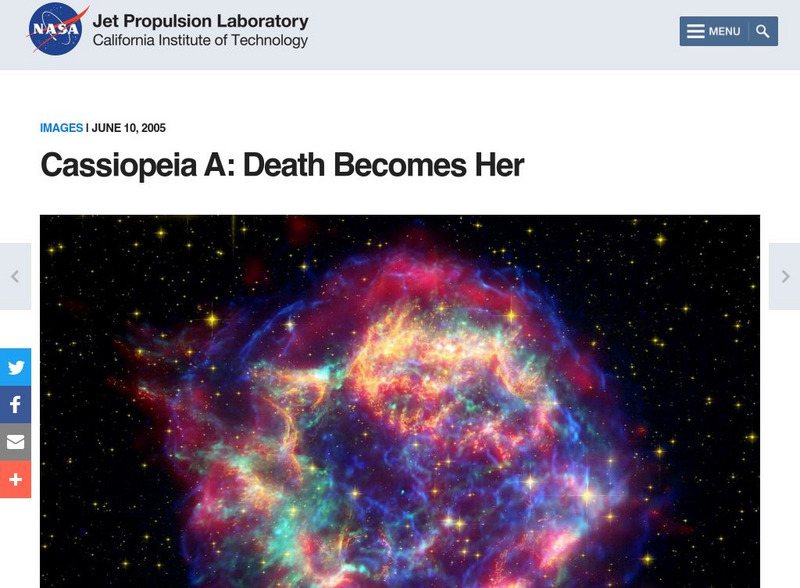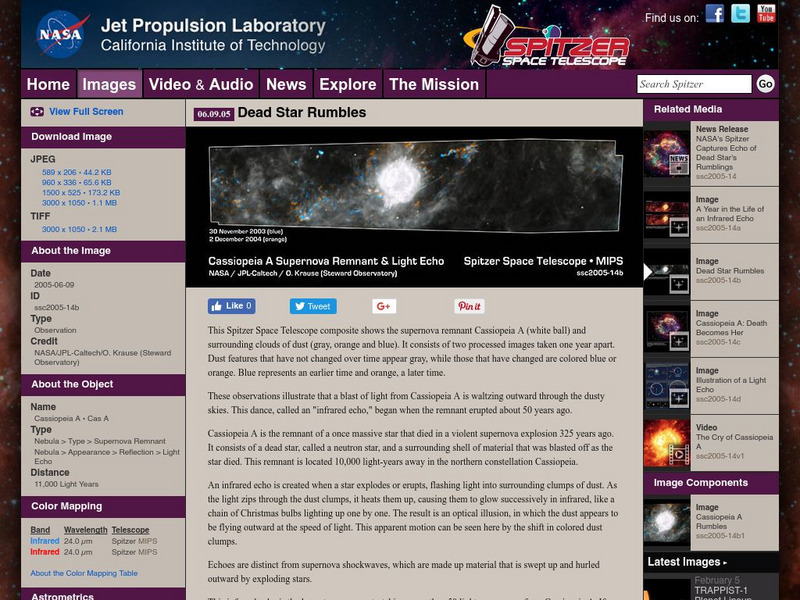Curated OER
X-ray Spectroscopy and the Chemistry of Supernova Remnants
This link takes you to a comprehensive unit that delves into emission spectra and supernovas. There are four parts: How and where elements are created, electromagnetic radiation, spectroscopy, and the newest technology for studying our...
Las Cumbres Observatory
Measure the Age of Ancient Cosmic Explosions
Supernova explosions mark the end of a star's life. Guide the class through an investigation that uses data to calculate the age of a supernova remnant. Using provided data and online software, they analyze data to determine the radius...
Curated OER
Space Math Differentiation-"Ch..Ch..Ch..Changes"
In this differentiation in space math activity, students use 6 different equations to solve 6 problems that involve differentiation related to astrophysics.
Curated OER
Our Neighborhood in the Milky Way
In this Milky Way galaxy worksheet, learners are given a table of distances and angles of nebulae and star clusters from the sun. Students plot each one on a piece of paper and solve 2 problems using the data.
Curated OER
Simple Machines
Students engage in a lesson that is concerned with the concept of a simple machine and uses the law of motion to justify why they operate. Students explore the laws by constructing some simple machines to illustrate the concepts.
Curated OER
Luisa's Steller Evolution Lab
Students examine stars and constellations in the night sky. They complete a KWL chart and calculate the mass of stars. They also discuss how a star is formed.
Curated OER
Timing An X-ray Pulsar
Students use X-ray data to identify an object as a rotating neutron star, and determine its period of rotation. They use XTE observations of the Crab Pulsar to determine the period of the light intensity, interpret this period as the...
NASA
Nasa: Imagine the Universe: Supernovae Remnants
A brief description of supernova remnants with many embedded links to help define terms used in the description. The specific topics are age and the importance of remnants to us and the types. Definitions of key words are provided.
California Institute of Technology
Spitzer Science Center: Kepler's Supernova Remnant
This image, titled "Kepler's Supernova Remnant: Views from Chandra, Hubble and Spitzer" features six individual pictures of Kepler's supernova taken with different types of equipment (x-rays, infrared, etc). The text under the image...
NASA
Nasa: Crab Nebula Supernova Remnant
The Crab Nebula Supernova Remnant image is part of a series of photographs taken from the Spitzer Space Telescope. The picture is accompanied by a textual overview of a nebula left over from a supernova explosion. Specific attention is...
NASA
Nasa: Imagine the Universe: Gamma Rays From Supernovae and Supernova Remnants
Astronomers use gamma decay to study the lives of the stars.
PBS
Pbs: Nova Online: Birth of a Supernova
PBS site explores the birth of a Supernova and explores its common types.
NASA
Heasarc: Supernova
Describes the most energetic explosive event in outer space: the supernova. Includes animation of a supernova.
California Institute of Technology
Spitzer Science Center: Crab Nebula
This image, titled "Crab Nebula Supernova Remnant" features the Crab Nebula which was noted in the constellation of Taurus by Chinese astronomers. The text under the image details various specifics about the picture.
California Institute of Technology
Spitzer Science Center: Image of an Infrared Echo
The Infrared Echo, featured this space telescope image of the supernova remnant of Cassiopeia A, is created when a star explodes. A detailed textual overview explains various specifics of the picture.
Space Telescope Science Institute
Hubble Site: Supernova Shock Wave
This site from the Hubblesite highlights an article written about a supernova shock wave. Provides images as well as video footage. Site offers links to fast facts, a question and answer section as well as related links.
NASA
Nasa: Cassiopeia A
This image, titled "Cassiopeia A: Death Becomes Her" features the supernova remnants of Cassiopeia A. The text under the image details various specifics about the picture.
Other
Cosmic Wonders: Nebulae
Various different types of nebulae can be explored on this site. View and learn about this stellar phenomena and how they contribute to the growth of the solar system.
California Institute of Technology
Spitzer Science Center: Dead Star Rumbles
This image, titled "Dead Star Rumbles" features a medium-sized image of the remnants of Cassiopeia A and its surrounding infrared echo. The text under the image details various specifics about the picture.
NASA
Nasa: Imagine the Universe: Welcome to the World of Multiwavelength Astronomy!
This Imagine the Universe site provides an introduction into the multiwavelength universe and astronomy. Site provides graphics, links to a quiz, facts on this topic as well as teacher resources.





